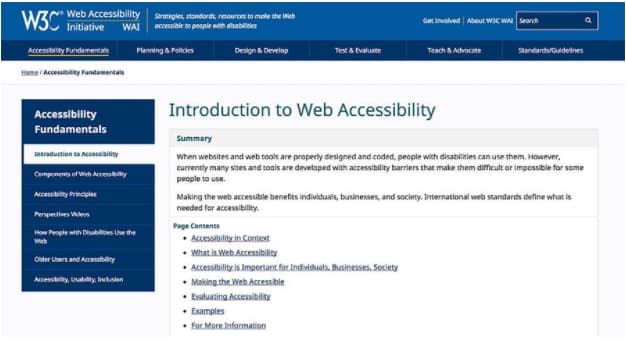You step into the world of business with lots of dreams to get successful. To become successful, your brand needs to be popular first. And you need to make your website accessible. But, what if your website fails to make its identity visible in the eyes of the target audience. Horrible! We know that you are not dreaming of that.
There are lots of websites which lose their accessibility and fall apart. According to a research by crownpeak.com, the vast majority of websites do not offer a fully accessible experience. Or, put another way, less than 2% of the world's top one million websites are capitalizing on the disability market. This is a largely underserved and growing market, and making adjustments to the web experience may serve as an under-the-radar competitive advantage.
Don’t panic and take a deep breath. To make yourself and your brand accessible and visible to everyone, you just need to focus on good optimization factors that will make your website accessible to everyone. But, before that let’s have a quick tour of the introduction of web accessibility.
What is meant by Accessibility of Website?

There is no doubt that everyone should be able to access your website on the internet. No matter what kind of software or hardware they are using, your website should be accessible to them. This is the main purpose behind the web accessibility.
Did you know that there are millions of people who have special needs, disabilities, and impairments that can make it difficult or even impossible for them to use certain types of websites. If you design your website, keeping in mind these challenges then you are giving a warm welcome to these users too.
There are lots of disabilities that can affect the way people make use of your websites. These are some of the types of common categories of impairments:
- Visual Impairment: This consists of a partial or total inability to see or to perceive color contrasts.
- Hearing Impairment: Some users have a low ability to hear.
- Motor Skills/Physical Disabilities: Users may have problems in moving parts of their bodies, consisting of making precise movements (such as when using a mouse).
- Photosensitive Seizures: Conditions such as epilepsy can cause seizures that are usually triggered by flashing lights.
- Cognitive Disabilities: There are lots of conditions that affect cognitive ability, such as dementia and dyslexia.
To work in these kinds of situations, people use various assistive technologies to search on the internet. These technologies include screen readers that vocalize the text on each page, speech recognition software that converts speech into text, Braille terminals, and even alternative keyboards that accommodate special needs.
Key Factors to Make Your Website Accessible to Anyone
Add Images with Alt Text
A picture may be worth a thousand words, but visual elements like images are an accessibility barrier to blind users and those with low vision. They often have to rely on assistive technologies such as Screen Readers and refreshable Braille Readers.
Did you remember that our Science teachers used to say to make diagrams of each question in exams to get good marks? This means that image has a direct and quick impact over the viewer. An image can say more as compared to thousands of words.
Hold on! But this image can create barriers for people with visual disabilities. So these types of people usually use screen recorders. But these screen recorders are a kind of software program that reads the text on the screen using a synthesizer or Braille display.
These types of technologies are not able to read the text or text in the image. So, you need to add Alt Text to describe your images to disabled users. Always try to make your image quite clear and understanding. You can use alt attribute for brief descriptions and “Longdesc Tag” for lengthy descriptions.
Allow Users to Enlarge Font Sizes
Low eyesight makes it difficult for people to read small text. So, these people often use a particular font setting while browsing your website. Provide these people an option of style sheet with the ability to enlarge the font size without breaking page layout. In this way, they would be able to read your content easily. Also, make sure your CTA buttons have a larger font size. Also, make these buttons visible to people with impaired vision.
Choose Your Colors Carefully
We frequently talk about color blindness as though it's a, seriously, high contrast issue. Be that as it may, it's to a greater extent a range since various individuals see colors in remarkable ways (recall The Dress)? Accordingly, you really want to ensure the colors you select on your site contrast well to make sure that everybody can recognize different components on the page.
The most major problem is ensuring text contrasts the background. Preferably, you should set a dim color against a light one, ensuring that they don't bleed into one another.
Suppose you need to utilize a blue color plan. You'd need to try not to make a range where the colors are too comparable in hue and saturation, like this:
This is very hard to read. Instead, a clearer color contrast works much better. Have a look:
Add Keyboard Navigation
Navigation is a challenge for blind and visually impaired users. They are incapable of using the mouse, so, you need to incorporate keyboard navigation into your website. Blind users will use Braille keyboards to access your site.
Ensure disabled users can get to all interactive components of your website, including:
- URLs
- Anchor text
- Drop-down menus
- Widgets
- Forms
- CTAs
- Dialog boxes
Make Video and Multimedia Accessible
Videos play an important role on your website in attracting user’s attention and increasing their retention on your website. As blind and visually-impaired users can’t see visuals, deaf users and those hard-of-hearing can’t hear audio.
To make them understand, you can use an audio description to describe visuals-only parts such as images, gestures, and changes in settings, among others. It will help blind users to enjoy the video.
Always try to make your description crisp and clear so that it makes sense. Don’t make your user’s experience meaningless.
Final Words
Making your website accessible to everyone is one of the most important things that you can do by optimizing your website. Optimizing a website includes all the above-given key factors. So, try to keep in mind all these key factors while designing your website.
